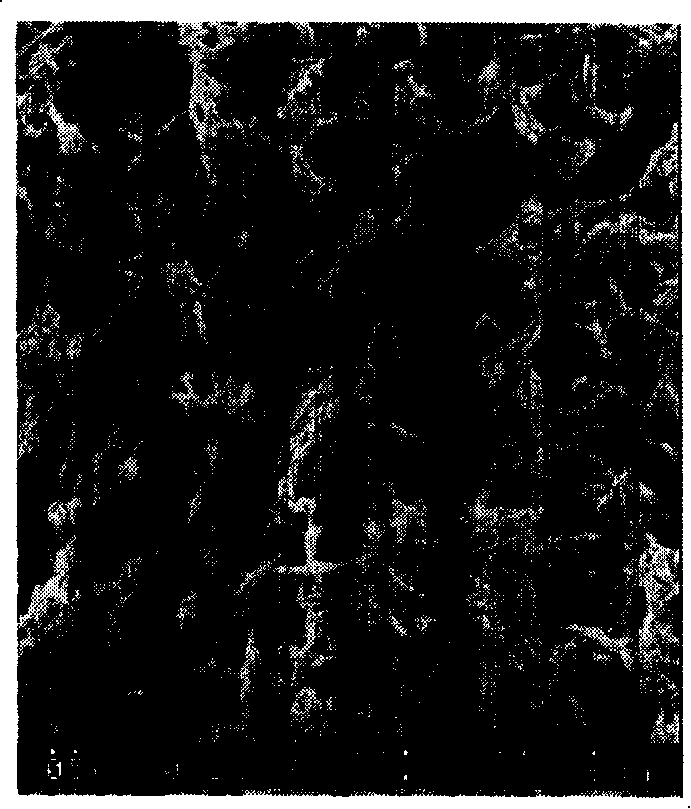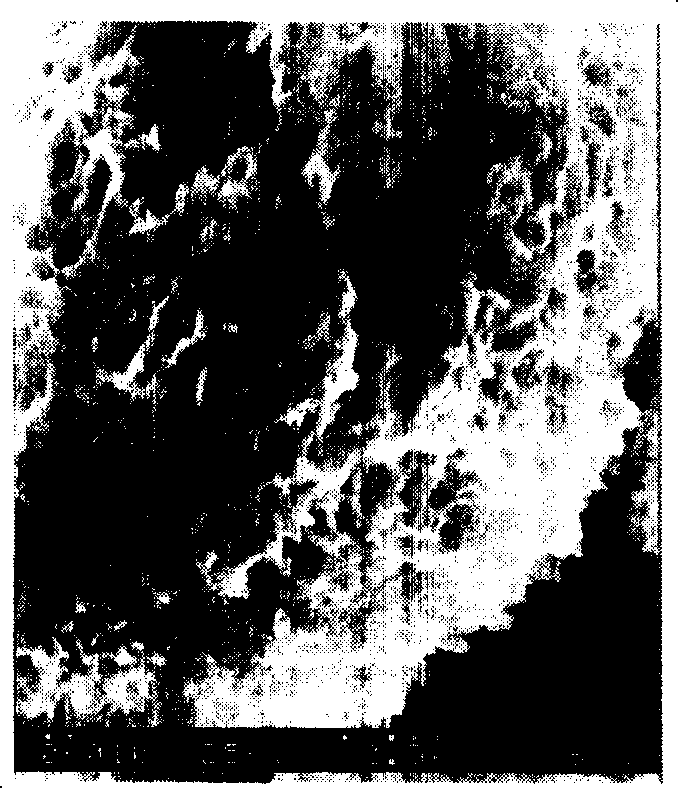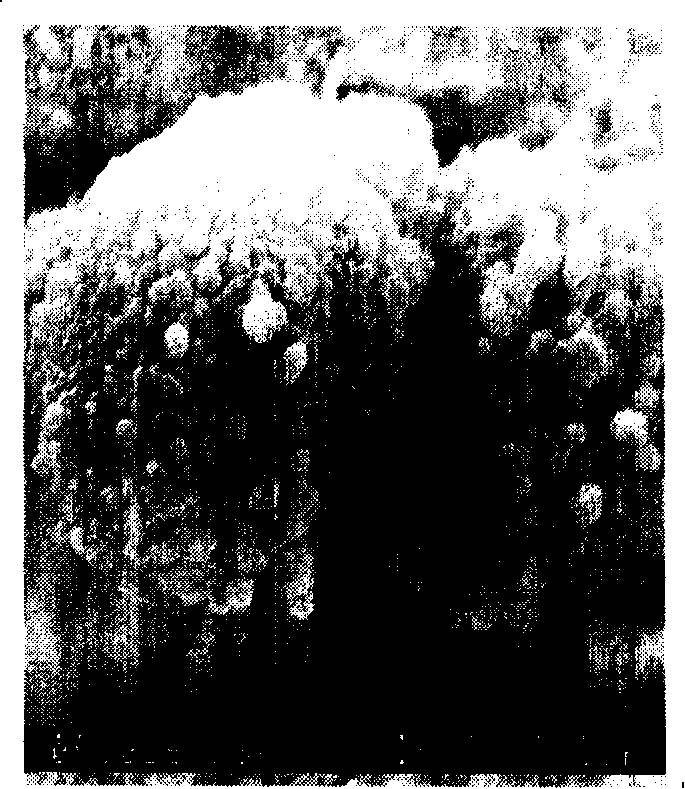Polyether-ether-ketone porous film and preparation thereof
A technology of polyether ether ketone and porous membrane, which is applied in the field of polyether ether ketone porous membrane and its preparation, can solve the problems of high temperature resistance, general solvent resistance, and limited use value, and achieve narrow pore size distribution, high porosity, high intensity effect
- Summary
- Abstract
- Description
- Claims
- Application Information
AI Technical Summary
Problems solved by technology
Method used
Image
Examples
Embodiment 1
[0024] The polyetheretherketone has a number-average molecular weight of 160,000, the diluent is benzophenone, and its components are 20% by mass of polyetheretherketone and 80% by mass of benzophenone. Heat up to 260°C in a high-temperature stirred tank, stir and mix evenly. The obtained polymer homogeneous solution is directly coated on the template, and water is selected as the cooling liquid for the cooling bath. Immersed in cooling liquid to make the solution phase-separated and solidified to form a film, then extracted with acetone and dried. The thickness of the obtained flat film is 150 μm, the cross-sectional pore structure of the film is a branch-like pore structure, the internal average pore diameter is 0.09 μm, and the porosity is 80%. The electron microscope photos are as follows: figure 1 shown. At 25°C, the pure water flux is 1100L / m 2 ·hr·0.1MPa. Below 250°C, after immersion in acid solution (0.4mol / L sulfuric acid solution) and lye solution (0.4mol / L NaOH ...
Embodiment 2
[0026] The number average molecular weight of polyether ether ketone is 160,000, the number average molecular weight of polyphenylene sulfide is 90,000, and the diluent is benzophenone. Its components are 10% by mass of polyether ether ketone, 10% by mass of polyphenylene sulfide, and 80% by mass of benzophenone. Heat up to 280°C in a high-temperature stirred tank, stir and mix evenly. The resulting homogeneous solution of the polymer was coated directly on the template. The cooling bath chooses water as the cooling liquid. Immersed in cooling liquid to make the solution phase-separated and solidified to form a film, then extracted with acetone and dried. The thickness of the obtained flat film is 150 μm, the cross-sectional pore structure of the film is a branch-like pore structure, the internal average pore diameter is 0.2 μm, and the porosity is 85%. The electron microscope photos are as follows: figure 2 shown. At 25°C, the pure water flux is 1500L / m 2 ·hr·0.1MPa. B...
Embodiment 3
[0028] The number-average molecular weight of polyetheretherketone is 160,000, and the diluents are diphenyl ether and benzophenone. Its components are 20% by mass of polyether ether ketone, 40% by mass of diphenyl ether and 40% by mass of benzophenone. Heat up to 260°C in a high-temperature stirred tank, stir and mix evenly. The resulting homogeneous solution of the polymer was coated directly on the template. The cooling bath selects ethanol as the cooling liquid. Immersed in cooling liquid to make the solution phase-separated and solidified to form a film, then extracted with ethanol and dried. The thickness of the obtained flat film is 150 μm, the cross-sectional pore structure of the film is a spheroidal pore structure, the internal average pore diameter is 0.15 μm, and the porosity is 75%. The electron microscope photo is as follows: image 3 shown. At 25°C, the pure water flux is 1250L / m 2 ·hr·0.1MPa. Below 100°C, after immersion in acid solution (0.4mol / L sulfuri...
PUM
| Property | Measurement | Unit |
|---|---|---|
| pore size | aaaaa | aaaaa |
| melting point | aaaaa | aaaaa |
| porosity | aaaaa | aaaaa |
Abstract
Description
Claims
Application Information
 Login to View More
Login to View More - R&D
- Intellectual Property
- Life Sciences
- Materials
- Tech Scout
- Unparalleled Data Quality
- Higher Quality Content
- 60% Fewer Hallucinations
Browse by: Latest US Patents, China's latest patents, Technical Efficacy Thesaurus, Application Domain, Technology Topic, Popular Technical Reports.
© 2025 PatSnap. All rights reserved.Legal|Privacy policy|Modern Slavery Act Transparency Statement|Sitemap|About US| Contact US: help@patsnap.com



